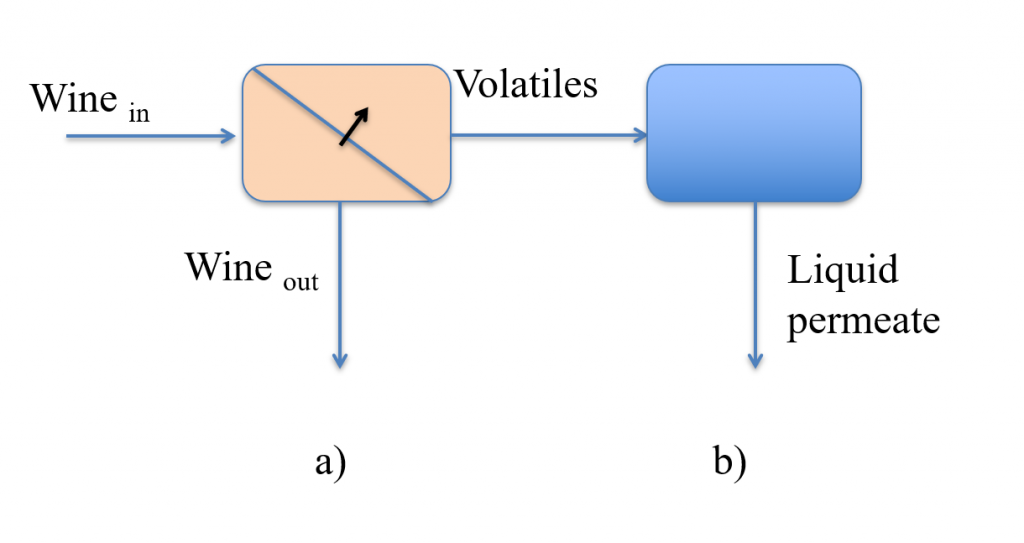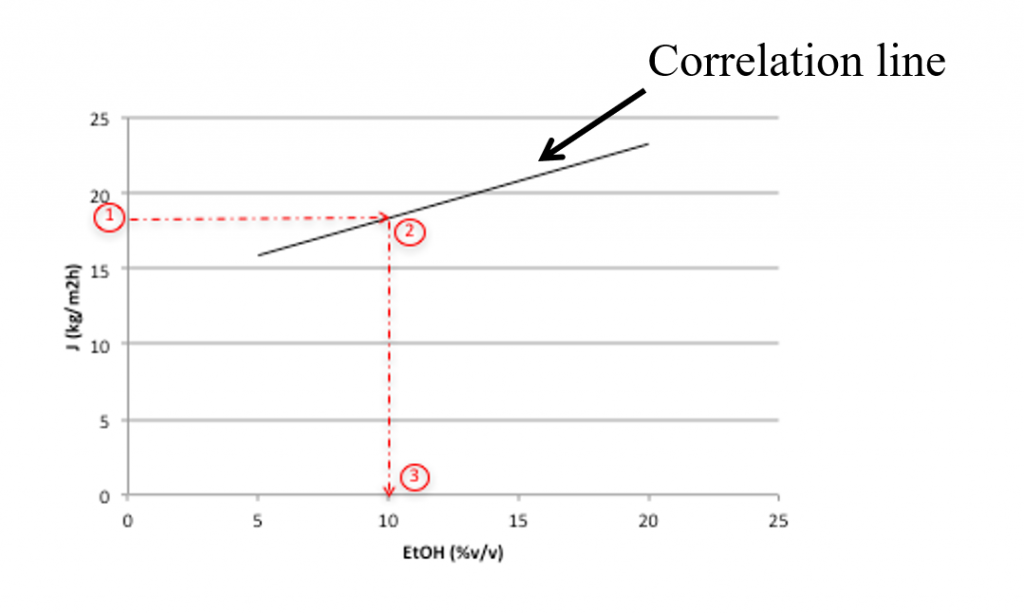By Alessandra Criscuoli
Membrane operations find application in different fields and represent the dominant technologies for dialysis and water desalination. The reason of their success lies in their capability of working at ambient temperatures and without need of chemicals. Moreover, they do not present moving parts, offer high capacity/size ratios, and are characterized by flexibility and modularity, that make easy their scale-up. Therefore, they well respond to the increased need of developing sustainable processes and of reaching the goals of the process intensification strategy. Among the different fields, membrane technologies are also successfully applied in wine processing, mainly for clarification, stabilization, concentration, control of sugar content, de-alcoholization and dissolved oxygen and carbon dioxide control (El Rayess and Mietton-Peuchot, 2016; Nordestgaard, 2018; Schonenberger, 2014; Zamora, 2016). Recently, it was proposed to use membrane operations as alternative tool to measure the alcohol content of wines at low temperature (20°C-40°C) (Criscuoli et al., 2019). Specifically, one side of a commercial polypropylene microporous membrane was put in contact with the wine, the other side being kept under vacuum. Due to the hydrophobic character of the membrane, the liquid phase did not enter the micropores, while volatile species were more or less transferred, on the basis of their vapor pressure, from the liquid to the vacuum side. Then, they were condensed and recovered as liquid permeate (Fig. 1). By dividing the mass of liquid permeate (kg) to the membrane area (m2) and the time of the experiment (h) it was possible to determine the so-called “trans-membrane flux” or “permeate flux” (J), expressed in kg/m2h.

Wine contains different volatiles, but, after water, ethanol is that present in higher amount, so it was possible to link the permeate flux to the ethanol content of wine. More in details, tests on hydro-alcoholic solutions (ethanol content of 5, 10 and 20 % v/v) were first carried out, and a correlation line between permeate flux and ethanol concentration was obtained. Afterwards, tests on commercial white and rosé wines (both at 10.5 % v/v) were conducted and the related pemeate fluxes registered. The measured fluxes were, then, used to determine the ethanol content of the wines through the correlation line (Fig. 2).

When reported on the correlation line, a good fit was obtained for the permeate flux of the white wine, while the flux of the rosé wine was lower, probably because of fouling issues due to anthocyanins, being their concentration higher in the rosé wine. This preliminary investigation confirmed the potential of membrane operations for the determination of ethanol content in wines and hydro-alcoholic solutions. It also evidenced the aspects to be solved for an optimization of the technique, like the need of developing pre-treatment methods to reduce fouling and the identification of membranes with lower tendency to interact with species contained in wines. Once optimised, the use of membrane operations will allow to operate at lower temperatures than the traditional distillation-density method, reducing the energy consumption associated to the analysis.

Alessandra Criscuoli. Researcher at the Institute on Membrane Technology (CNR-ITM), degree and PhD in Chemical Engineering. Expert in membrane operations, also as integrated systems, especially in membrane contactors applied to water and wastewater treatments and to water desalination. Member of the University of Calabria (Italy) PhD Council in Chemical Engineering and Materials (now SIACE) since 2010; member of the European Federation of Chemical Engineering (EFCE) Section on Membrane Engineering since 2008. Member of the Council of the European Membrane Society (EMS) (2011-2014), with responsibility for “Education and Awards” activities. Member of evaluation boards and of scientific and organising committees of international conferences. Reviewer of scientific journals, research projects and PhD theses. She has experience as scientific responsible of national and international research projects. She attended, also as chairperson, several national and international scientific conferences on membranes, with both oral and poster presentations, as well as key-note invited lectures. She also presented lectures at courses on membrane operations. Co-author of one book on membrane contactors and of 90 contributions published in international peer-reviewed journals and as book chapters. Co-editor of three books on membrane operations and water treatment and of journal special issues on membrane technology.
References:
- Criscuoli, A., Frison, N. and Drioli, E. Membrane contactors for measuring the alcohol content of wines: A preliminary investigation, Separation and Purification Technology 215 (2019) 384-389.
- El Rayess, Y. and Mietton-Peuchot, M. Membrane Technologies in Wine Industry: An Overview, Critical Reviews in Food Science and Nutrition, 56:12 (2016) 2005-2020.
- Nordestgaard, S. Gains in speed, labour and gas consumption for winemakers, Grapegrower Winemaker 648 (2018) 61–67.
- Schonenberger, P., Baumann, I., Jaquerod, A., Ducruet, J. Membrane Contactor: A Nondispersive and Precise Method to Control CO2 and O2 Concentrations in Wine, Am. J. Enol. Vitic. 65 (2014) 510-513.
- Zamora, F. Dealcoholised Wines and Low-Alcohol Wines, in Wine Safety, Comsumer Preference, and Human Health, Eds. Moreno-Arribas, M.V. and Bartolomé Sualdea, B., Springer International Publishing Switzerland (2016) 163-182.

